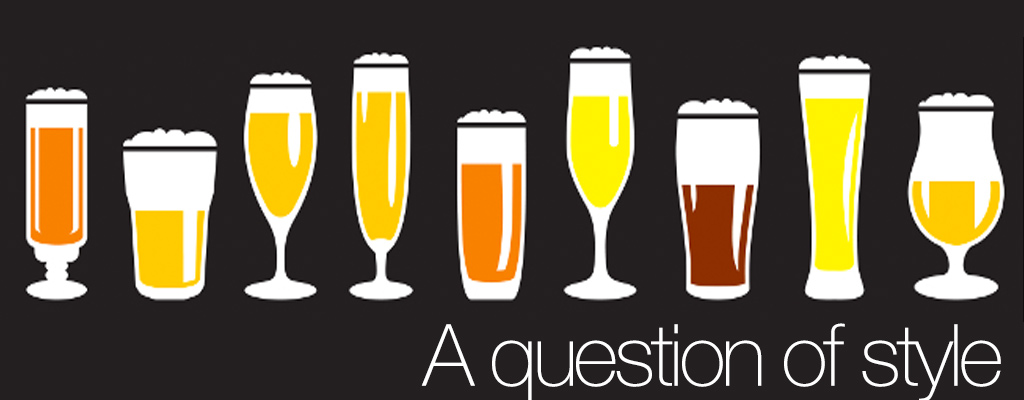I remember when the rules of the game were all I cared about.
What divided one style from another? At what exact moment did an old ale become a barleywine? When did an IPA become a double IPA? Was there a simple equation to unravel that would give me these answers?
What were the qualities that made a saison, or a Belgian blonde or a witbier? Saisons are dry and blondes are more sweet and wits are creamy, right? They all have their own yeasts too and above all this is what separates these beers from each other. These were things I knew to be true.
Years later I found myself sitting at a table in a greasy dinner in Wallonia, the French-speaking region of Belgium known for its saisons, or farmhouse beers. I was eating fries with mayonnaise and what looked like a corn-dog, only it was made of chicken. Paradoxically, I was drinking an Orval in a branded Orval chalice that had been poured immaculately by the waitress (Anything less would be pretty much unthinkable in Belgium). Across from me was Dany Prignon, founder of Brasserie Fantome, one of the most famous saison producers in the world. I asked him if he thought there was any distinct difference between the blonde beers made in Wallonia and those made in the Flemish speaking region of Flanders. To your average North American brewer this was an idiotic question as these beers were as different as night and day. Dany thought for a second and said “No, not really,” before returning to his fries.
Is this part of the reason North American brewers consistently mess up Belgian-style brewing? Belgian style-beers here are often heavy and sweet with sickly flavours of banana, or bubblegum or are overpowered with clove or are boozy and undrinkable. I never had beer like this in Belgium (okay Belgian beer can be sweet, but dryness and drinkability are common themes that run through nearly all Belgian beers). Maybe because we are so obsessed with style here, with beer being correct in some way that we lose sight of whats most important:
Is it any good?
The Middle Path
All this thinking about style and what it really means brings me back to Sooke Brewing and the second most popular question for people to ask after When will the brewery open?”
What beers are you going to brew?
Hmmm, good question…
When I first started thinking about styles for Sooke Brewing I wanted to avoid some of the pitfalls I had seen in the past. I’ve noticed that smaller breweries with limited tank capacity often get stuck brewing a very limited lineup of beers. The fact they don’t have much brewing capacity forces them to repeatedly brew a few regular beers to keep them from running out whereas bigger breweries have the capacity to keep their regular beers in stock while simultaneously bringing out new styles
Was there a way for a smaller brewery to do this?
I started thinking about the way craft breweries approach brewing beers. Most beers can fit into one of three categories: regulars, seasonals, and periodicals/one-offs. Regular beers are brewed and available all the time. Seasonals are available, well, seasonally. Periodical/one-offs are released from time to time, or possibly only once. This is a great system for a bigger craft brewery that allows for a large lineup of constantly changing beers while still providing certain styles that customers know they can always buy. A lot of smaller craft breweries try to follow this pattern as well, but lacking the fermentation space of their larger cousins, end up constantly brewing the same small range of beers in order not to run out, thereby stifling innovation in the styles they can brew. Like so many things in the beer business the models of smaller breweries often mirror those of bigger operations even when they don’t work as well.
Is there another option?
One alternative to this that springs to mind is Gigantic Brewing in Portland who (for the most part) never brews a beer twice, apart from its IPA. Although this certainly allows for loads of innovation there are drawbacks to this, like limiting brand loyalty and not allowing for a beer to be improved by re-brewing. With all this in mind I asked myself if there was a middle path.
At a recent Sooke Brewing owners meeting the question of what to brew was discussed and I asked for everyone’s opinion on what they would like to see brewed. What struck me about the answers I got was that although a wide range of different beers were suggested, everyone for the most part mentioned the same basic types of beer: something easy drinking, something hop focused, something malt focused, etc.
Returned home from the meeting I sat up late into the night thinking about this. At some point that evening a light went off in my head. What if instead of regular beer styles there were regular categories of beer that were always available, but the individual styles within those categories changed? For instance, one potential category called something like “easy drinker,” could feature styles like Vienna lager, pilsner, or kolsch. Although the particular beer on offer would change, for someone looking for something light and refreshing, or someone new to craft brewing, a beer in this category would always appeal.
Ideally, this should allow for nearly endless opportunity to change and innovate styles, while at the same time ensuring patrons know that although the particular beer they had before might not currently be available, something just like it will be on offer.
So anyways, thats the plan.
I hope you like it.


